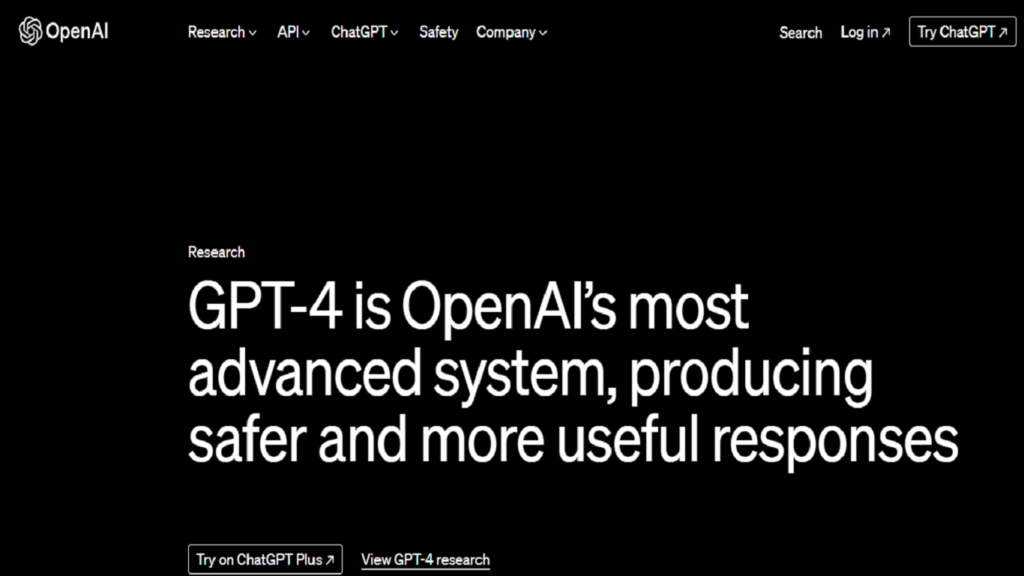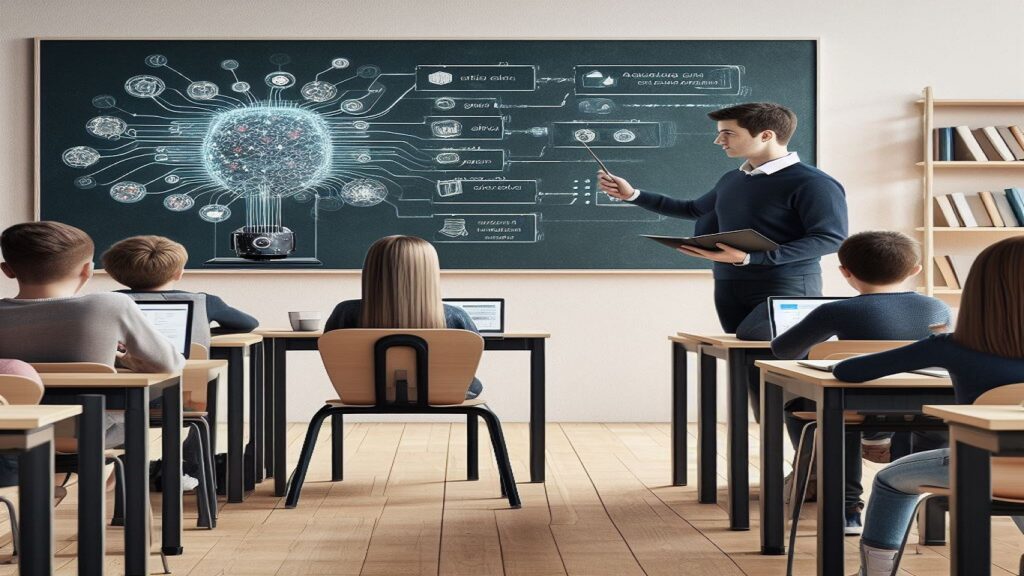Many questions arise from the recent explosion of Artificial Intelligence (AI) technology into the public consciousness. Even though many people see the potential benefits of these apps and gadgets, we also need to consider the pros and cons of AI in education.
AI is revolutionizing a wide range of societal domains. What effects is AI having on education and learning? We will discuss both the positive and negative effects of AI in the education sector.
If you want to remove AI Detection and Bypass AI detectors use Undetectable AI. It can do it in one click.
Generative AI

In computer science, artificial intelligence is the study of developing software that can mimic human like reasoning, learning, problem solving, and creative processes, among other behaviors and processes.
Language translation, image recognition, autonomous car navigation, cancer detection and treatment, and creating content and knowledge are just a few of the many tasks that AI systems can be used for.
Foundation Models
In generative AI, foundation models are systems that are trained on a sizable dataset to acquire a broad foundation of knowledge that can subsequently be tailored to a variety of distinct, more specialized uses.
By identifying patterns and relationships in the training data, the model gains knowledge through self-supervised learning.
Large Language Models
The foundation models that have been trained on a large volume of text data are called Large Language Models (LLMs).
Among the LLMs are Meta LLaMA, Google PaLM, and OpenAI GPT-4. The foundations for AI applications are these LLMs. While Bard is based on Google Pathways Language Model 2 (PaLM 2), ChatGPT is built on GPT-3.5 and GPT-4. Among the most well-known applications are:
ChatGPT-3.5

OpenAI released ChatGPT free edition in November 2022. It is fast, but prone to errors because it was only trained on data up to 2021.
ChatGPT-4.0

The most recent version of ChatGPT is slower than ChatGPT 3.5 but offers more power and accuracy; it also requires a paid account. Through plug-ins, it can also perform more complex mathematical operations, communicate with content from websites, and access additional services, extending its capabilities.
With the addition of a Code Interpreter feature, ChatGPT can now analyze data, make charts, handle mathematical problems, modify files, and even formulate theories to explain patterns in the data.
Microsoft Bing Chat

Microsoft Bing Chat is a version of Microsoft Bing search engine with ChatGPT technology from OpenAI added. It has web browsing capabilities and provides source citations for its findings.
Google Bard

The tone and style of Bard responses can be adjusted to be formal, informal, professional, lengthy, or simple. Bard also uses Google Lens to analyze images uploaded with prompts.
Google AI generates text, translates languages, writes various types of creative content, and writes and debugs code in more than 20 different programming languages.
Anthropic Claude 2

Claude 2 is a chatbot that can produce text, summarize information, and carry out other duties. It can evaluate texts that are approximately 75,000 words long and produce responses that are longer than 3,000 words.
In order to improve AI systems helpfulness, integrity, and safety, a set of guiding principles known as the constitution for AI systems was employed in the construction of the model.
Pros of Artificial Intelligence in Education

The Positive effects of AI integration in education are:
Personalization
AI can assist students in learning in the most effective ways for them by recognizing their learning styles and needs. In this manner, learning experiences for students are tailored to their aptitudes, learning objectives, and rate of learning.
Students can accomplish better outcomes and find this to be more rewarding and engaging.
Optimization
AI can maximize students learning results and productivity. It has the ability to analyze data and offer insights into the performance, growth, and potential of students. It is capable of suggesting the best resources and learning tactics.
AI can automate laborious or repetitive tasks and processes.
Innovation
In the classroom, AI can encourage creativity and innovation. It can make new teaching and learning modalities possible, like gamification, simulation, and augmented reality. It can also inspire fresh concepts and approaches to issues or difficulties in education.
Cons of Artificial Intelligence in Education

AI has the power to transform education by providing intelligent tutoring, adaptive assessment, and personalized learning. Its incorporation into the educational system does, however, also present a number of risks and challenges that should be carefully considered.
Moral Concerns
The use of AI in education brings up ethical issues that need to be resolved right away. Principal areas of worry consist of:
- Privacy
- Fairness and Accountability
- Transparency
To preserve students privacy and digital rights, it is imperative to prevent unauthorized AI data collection or use. Keeping an equitable learning environment requires making sure AI systems do not show biases or discriminate against students based on their background, gender, or race.
It is also critical to hold AI responsible for its choices and deeds. To establish trust and confidence in AI driven educational processes, it is imperative to comprehend the workings of AI and the factors that impact its decisions.
Pedagogical Concerns
It is difficult to integrate AI into teaching and learning while maintaining its efficacy and quality. In this context, things to think about include:
- Preserving Educator Autonomy
- Fostering Critical Thinking and Creativity
- Impact Assessment
To preserve teachers distinct contributions to the learning process, AI must not eclipse human educators. In order to prepare students for the challenges of the future, it is imperative that the adoption of AI does not impede the development of critical thinking and creative thinking abilities.
To pinpoint areas for development and guarantee successful implementation, the effects and results of AI on teaching and learning must be assessed using suitable methodologies and standards.
Social Concerns
The application of AI in education presents difficulties for the social and emotional components of learning:
- Preserving Human Connection
- Building Community
- Addressing Psychological Impacts
A comprehensive learning experience depends on ensuring that AI does not take the place of the crucial human connection and interaction between students and educators. AI based tools and platforms can help create a supportive and collaborative learning environment by giving students a feeling of community and belonging.
It is critical for students and teachers wellbeing to be aware of the possible psychological and emotional effects of AI and to develop strategies to address those effects.
Uses of AI in Education

AI has the potential to fill a number of roles in teaching and learning, or does so already:
Instructional Assistants
The potential for AI to have human like conversations creates opportunities for instructional assistants or adaptive tutors to assist students in understanding complex ideas. AI feedback systems can provide students with helpful criticism on their writing, enabling them to improve their writing abilities.
AI models may facilitate individualized instruction for students with disabilities and offer translation services to English language learners.
Teaching Assistants
Some of the administrative duties that prevent teachers from spending time with their students could be handled by AI. Automated routine tasks like lesson planning, differentiating resources, worksheet design, and finding explanations for complex academic content are among the early uses.
AI can also give teachers advice on how to meet the needs of their students and support them as they plan, reflect, and advance their profession.
Parent Assistants
AI can be used by parents to create letters asking for services from an individualized education plan (IEP). AI could act as an administrative assistant for parents selecting a school for their child by creating application timelines, organizing contact details, and charting out nearby schools.
Even bedtime stories with dynamic plots catered to a child interests can be produced by generative AI.
Administrator Assistants
School administrators can use generative AI to draft newsletters, parent materials, and other documents pertaining to community engagement. In addition to helping with complex data analysis to find patterns or needs, AI systems can assist with the challenging jobs of scheduling classes or buses.
With its advanced sentiment analysis capabilities, ChatGPT can measure survey data and school climate, among other things.
Conclusion
By addressing many of the most prevalent problems in todays classrooms, such as distraction, poor communication, and time management difficulties, educational technology can assist in lowering the barriers to academic success.
While AI can be a useful tool in education, it is not a panacea. Depending on how it is created, implemented, and used, AI can have both positive and negative effects on the education. it is crucial to have a critical and impartial viewpoint on AI in education.
FAQs – Pros and Cons of AI in Education
How does the use of artificial intelligence in education impact the learning experience?
The use of AI systems in education can have a negative impact on the learning experience by minimizing human interaction, which is essential for students cognitive and social development.
It may hinder the development of critical thinking and may not be able to personalize learning experiences as effectively as human educators.
What are the potential negative effects of AI on students in the education sector?
The integration of AI in the education sector may have negative effects on students academic performance, as it may not always help students to improve their learning process and may lead to reduced engagement and human interaction, affecting emotional intelligence and social skills.
How does the use of AI in education affect the learning environment?
The use of AI in education may disrupt the learning environment by reducing the role of human teachers, which is crucial for students academic and personal development.
It may also limit the opportunities for students to engage in meaningful human interactions, impacting their overall learning experience.
What are the concerns related to the impact of AI on students learning process?
The deployment of AI tools in education raises concerns about its impacts on students learning process, including the potential negative effects on critical thinking, personal development, and the ability to engage in meaningful human interactions, which are essential for their educational experience.
What is the role of AI in the negative effects on students and teachers in the education sector?
AI role in the education sector may affect students and teachers by diminishing the quality of human interactions, which are crucial for effective teaching and learning.
It may also lead to a reduction in teachers ability to ensure personalized and responsive educational experiences for students.


